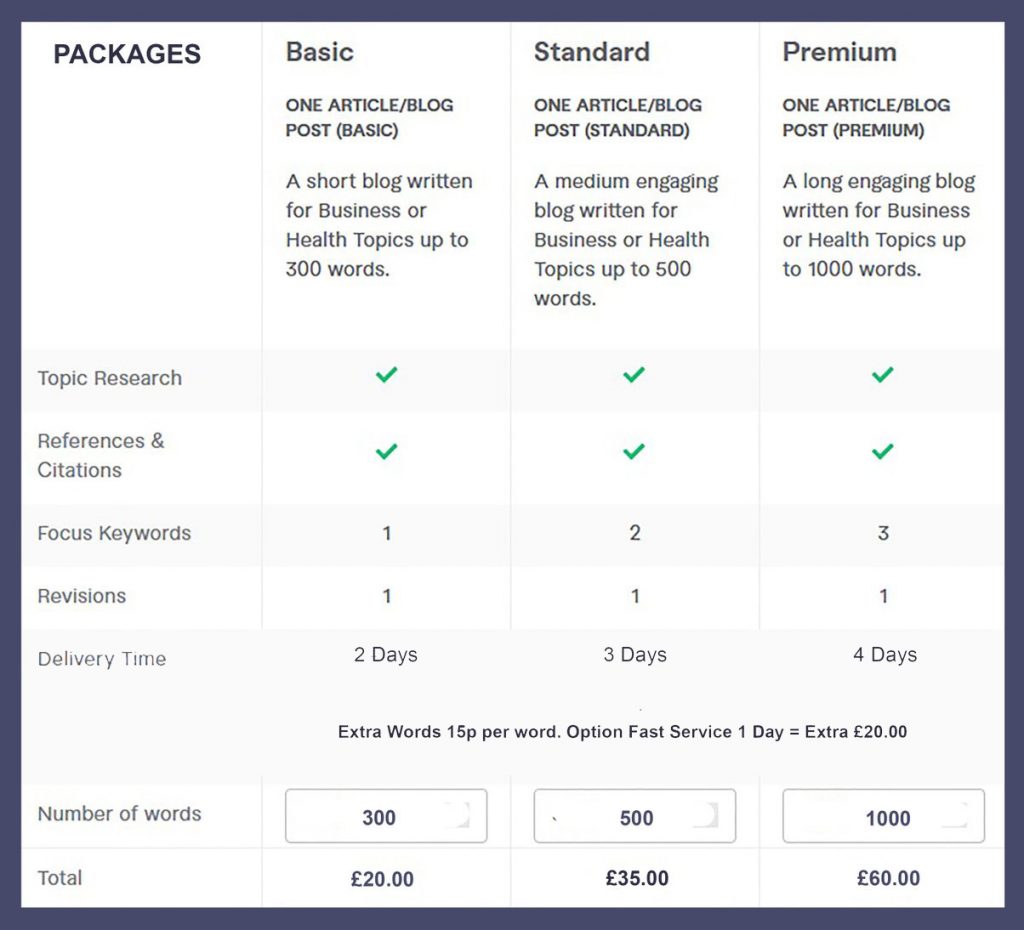The Subconscious Mind
The subconscious mind is a powerful force that often remains hidden from our conscious awareness. It is part of our mind that controls many of our automatic thoughts, feelings, and behaviors, as well as our deeper motivations and desires. Understanding how the subconscious mind works and how to tap into its power can help us achieve our goals and live a more fulfilling life.
What is the Subconscious Mind?
The subconscious mind is part of our mind that lies below our conscious awareness. It is part of our mind that processes information without us being aware of it, and it governs many of our automatic thoughts, feelings, and behaviors. It is responsible for storing and processing vast amounts of information, both positive and negative, and can influence our thoughts, emotions, and behaviors in powerful ways.
The subconscious mind is often associated with the idea of the “unconscious,” which was first introduced by Sigmund Freud, the founder of psychoanalysis. According to Freud, the unconscious mind is a repository for repressed memories and desires that have been pushed out of conscious awareness. However, modern research has shown that the subconscious mind is much more than just a repository for repressed thoughts and feelings.
How the Subconscious Mind Works
The subconscious mind works in a variety of ways. One of its primary functions is to process information that we receive from our environment, such as sights, sounds, smells, and touch. It also processes information from our internal environment, such as our thoughts, emotions, and bodily sensations.
The subconscious mind is particularly adept at recognizing patterns and making connections between seemingly unrelated pieces of information. It also has the ability to learn from experience and to adapt our behavior based on that learning. This is why we are able to perform many tasks automatically, such as driving a car or typing on a keyboard, without having to consciously think about each step.
The subconscious mind is also responsible for many of our emotions and behaviors. It can influence our perceptions of the world, our beliefs, and our values, and it can shape our attitudes and behaviors. For example, if we have a subconscious belief that we are not worthy of love, we may sabotage our relationships without even realizing it.
How to Tap into the Power of the Subconscious Mind
There are many techniques that can be used to tap into the power of the subconscious mind. One of the most common is visualization. This involves creating mental images of the things we want to achieve or the person we want to become. By focusing on these mental images, we can program our subconscious mind to help us achieve our goals.
Another technique is affirmation. This involves repeating positive statements to ourselves, such as “I am confident and capable” or “I am deserving of love and happiness.” By repeating these statements regularly, we can reprogram our subconscious mind to believe these statements and act in ways that are consistent with them.
Hypnosis is another technique that can be used to tap into the power of the subconscious mind. During hypnosis, a trained practitioner guides the client into a deep state of relaxation and suggests positive ideas and beliefs to the subconscious mind. This can help the client to overcome negative patterns of behavior and to achieve their goals.
How to reprogram the subconscious mind
The human mind is a complex and mysterious entity. It is comprised of the conscious and the subconscious mind, both of which work together to create our perceptions, thoughts, and actions. The conscious mind is responsible for our awareness and rational thinking, while the subconscious mind is responsible for our emotions, habits, and beliefs.
The subconscious mind is a powerful force that can greatly influence our lives. It can shape our behavior and perceptions without us even realizing it. Many of our habits and beliefs are ingrained in our subconscious minds through past experiences and conditioning. However, the good news is that we can reprogram our subconscious mind to create positive changes in our lives.
Here are some steps to reprogram your subconscious mind:
- Identify the beliefs and habits that you want to change: The first step to reprogramming your subconscious mind is to identify the negative beliefs and habits that are holding you back. These could be things like low self-esteem, fear of failure, procrastination, or negative self-talk.
- Replace negative thoughts with positive affirmations: Once you have identified the negative thoughts and beliefs, replace them with positive affirmations. Positive affirmations are statements that you repeat to yourself to reinforce positive beliefs and habits. For example, if you want to improve your self-esteem, you can repeat to yourself, “I am confident and capable.”
- Visualize your desired outcome: A visualization is a powerful tool that can help you reprogram your subconscious mind. Visualize yourself as the person you want to become, and imagine yourself living the life you desire. This will help you create a mental image of your goals and make them feel more achievable.
- Practice meditation and mindfulness: Meditation and mindfulness are effective techniques for reprogramming your subconscious mind. They help you become more aware of your thoughts and emotions and enable you to control them better. By practicing meditation and mindfulness, you can create a more positive and peaceful mindset, which will help you to reprogram your subconscious mind.
- Create a new routine: Creating a new routine can also help you reprogram your subconscious mind. By changing your habits and behaviors, you can create a new neural pathway in your brain, which will reinforce positive beliefs and habits.
- Seek professional help: If you find it challenging to reprogram your subconscious mind on your own, consider seeking professional help. A therapist or coach can help you identify the root cause of your negative beliefs and habits and guide you in creating new positive patterns of behavior.
Reprogramming your subconscious mind is a process that requires time, effort, and persistence. By identifying negative beliefs and habits, replacing them with positive affirmations, visualizing your desired outcome, practicing meditation and mindfulness, creating a new routine, and seeking professional help if needed, you can reprogram your subconscious mind and create a more positive and fulfilling life.
Brain waves alter a state of mind
The human brain, with its complex network of neurons firing in intricate patterns, generates electrical activity known as brain waves. These brain waves, categorized by frequency and amplitude, play a crucial role in shaping our cognitive states, emotions, and overall mental well-being. Understanding the different types of brain waves offers insights into various aspects of brain function, from deep sleep to heightened creativity.
- Delta Waves: Delta waves, the slowest brain waves, typically range from 0.5 to 4 cycles per second (Hz). These waves are prominent during deep, dreamless sleep and are associated with restorative processes such as bodily repair, growth hormone release, and overall rejuvenation. Delta waves are also observed in states of deep meditation or profound relaxation, reflecting a state of profound internal focus and introspection.
- Theta Waves: Theta waves, with a frequency of 4 to 8 Hz, are prevalent during light sleep, deep relaxation, and creative visualization. These waves are associated with the subconscious mind, creativity, and intuition. During theta states, individuals may experience vivid imagery, enhanced creativity, and a sense of spiritual connection. Theta waves also play a role in memory consolidation, learning, and accessing deeply buried emotions and memories.
- Alpha Waves: Alpha waves, ranging from 8 to 13 Hz, are prominent during states of relaxed wakefulness and calm, alert awareness. Often referred to as the “bridge” between conscious and subconscious states, alpha waves are associated with a relaxed yet focused mental state. They are observed during meditation, daydreaming, and creative activities such as brainstorming and artistic expression. Alpha waves promote mental clarity, stress reduction, and heightened states of mindfulness.
- Beta Waves: Beta waves, ranging from 13 to 30 Hz, are characteristic of active, waking states of consciousness. These waves are associated with focused attention, analytical thinking, and problem-solving. Beta activity increases during tasks requiring cognitive effort, such as studying, working, or engaging in conversation. While excessive beta activity may lead to anxiety, stress, or overthinking, moderate levels support alertness, concentration, and cognitive performance.
- Gamma Waves: Gamma waves, the fastest brain waves, have frequencies above 30 Hz and are associated with higher cognitive functions, perception, and consciousness. These waves are involved in complex information processing, sensory integration, and the binding of sensory inputs into coherent perceptions. Gamma activity is heightened during activities requiring heightened awareness, such as meditation, deep concentration, and moments of insight or inspiration.
The spectrum of brain waves represents a dynamic interplay of neuronal activity underlying our cognitive states, emotions, and experiences. From the deep sleep of delta waves to the heightened awareness of gamma waves, each frequency band offers unique insights into the workings of the human mind. By understanding and harnessing the power of different brain wave states, we can optimize our mental health, enhance cognitive function, and unlock the full potential of our consciousness.
Brain waves can alter a state of mind. Brain waves are electrical patterns generated by the neurons in the brain, and they vary depending on the state of the brain, such as whether the person is awake or asleep, or whether they are focused or relaxed.
There are a variety of techniques that aim to alter brain waves in order to produce changes in a person’s mental state, such as relaxation, concentration, or improved mood. For example, meditation, biofeedback, neurofeedback, and brainwave entrainment techniques all work by altering brain waves to induce a particular state of mind.
Brainwave entrainment, in particular, is a technique that involves exposing the brain to rhythmic stimuli, such as sound or light, that are designed to synchronize brain waves with an external stimulus. This can help induce a specific mental state, such as relaxation, meditation, or improved focus.
It’s worth noting that the extent to which brain waves can alter a person’s state of mind depends on a number of factors, including the individual’s brain function, susceptibility to the particular technique being used, and other external factors such as stress, diet, and sleep.
Exploring the Enigmatic Phenomenon of Quantum Jumping
Quantum physics, where the boundaries of reality blur into the surreal, exists a concept that intrigues both scientists and enthusiasts alike – Quantum Jumping. This phenomenon delves into the idea of multiple realities and the potential to shift between them, offering a glimpse into a universe where the impossible becomes possible. While it often resides on the fringes of scientific inquiry, Quantum Jumping has captured the imagination of many, sparking discussions about consciousness, perception, and the nature of existence itself.
Understanding Quantum Jumping: Quantum Jumping, also known as reality shifting or reality jumping, draws its roots from the principles of quantum mechanics. At its core lies the notion that particles at the quantum level exist in a state of superposition, meaning they can simultaneously occupy multiple states until observed. This principle extends to the macroscopic world, suggesting that multiple realities or possibilities exist simultaneously until we observe or experience them.
According to proponents of Quantum Jumping, individuals can harness the power of their consciousness to navigate these alternate realities and manifest desired outcomes. This process often involves visualization, meditation, and a deep focus on the desired reality one wishes to inhabit. By aligning their thoughts, intentions, and emotions, practitioners aim to “jump” into a parallel reality where their goals are realized, be it in career, relationships, health, or personal development.
The Role of Consciousness: Central to the concept of Quantum Jumping is the role of consciousness in shaping reality. In quantum mechanics, the act of observation or measurement collapses the wave function, determining the state of a particle. Similarly, proponents of Quantum Jumping believe that conscious intent can collapse the wave function of reality, selecting a specific outcome from the myriad possibilities.
This idea resonates with various spiritual and metaphysical teachings that emphasize the power of the mind in creating one’s reality. Whether framed within the context of the law of attraction, quantum entanglement, or parallel universes, Quantum Jumping offers a framework for understanding how consciousness may influence the fabric of existence itself.
Scientific Perspectives and Skepticism: While Quantum Jumping sparks fascination and curiosity, it also attracts skepticism from the scientific community. Many physicists argue that the interpretations of quantum mechanics supporting such phenomena are speculative at best and lack empirical evidence. The notion of consciousness directly influencing reality remains a topic of philosophical debate rather than established scientific fact.
Critics point out that experiences attributed to Quantum Jumping could be explained by psychological factors such as selective memory, confirmation bias, or the placebo effect. Without rigorous experimental validation, Quantum Jumping remains firmly entrenched in the realm of pseudoscience for many scientists.
Exploring the Implications: Despite the skepticism surrounding Quantum Jumping, its popularity persists, fueled by anecdotal accounts of personal transformation and success. For adherents, it offers a sense of empowerment and agency in shaping their lives according to their desires. Whether viewed as a profound metaphysical concept or a mere psychological tool, Quantum Jumping prompts contemplation on the nature of reality and the potential of human consciousness.
From a philosophical standpoint, Quantum Jumping challenges conventional notions of causality and determinism, suggesting a universe brimming with possibilities waiting to be explored. While its practical applications remain uncertain, the concept invites us to reconsider our assumptions about the nature of reality and the limits of human potential.
Quantum Jumping stands at the intersection of science, philosophy, and spirituality, offering a tantalizing glimpse into a reality beyond our everyday experience. Whether regarded as a profound insight into the nature of existence or dismissed as fanciful speculation, it continues to captivate the imagination of those who dare to explore the mysteries of the quantum realm. As we journey deeper into the uncharted territories of consciousness and reality, Quantum Jumping reminds us that the universe is far more enigmatic and wondrous than we can imagine.
Step By Step Method Of Quantum Jumping
While Quantum Jumping remains a concept primarily explored within metaphysical and speculative contexts, proponents often suggest a step-by-step method to engage in this practice. It’s important to note that the effectiveness of such methods is subjective and varies greatly among individuals. Here’s a generalized step-by-step guide based on common principles associated with Quantum Jumping:
- Set Your Intentions: Begin by clarifying your intentions and identifying the specific reality or outcome you wish to manifest through Quantum Jumping. Whether it’s achieving personal growth, career success, or improving relationships, clearly define your goals to focus your energy and intention.
- Enter a Meditative State: Find a quiet and comfortable space where you can relax without distractions. Close your eyes and focus on your breath, allowing your body and mind to enter a state of deep relaxation. Meditation helps quiet the chatter of the conscious mind and enhances receptivity to subtle shifts in consciousness.
- Visualize Your Desired Reality: Once in a relaxed state, visualize yourself already inhabiting the reality you wish to experience. Use vivid imagery, engaging all your senses to create a detailed mental picture of your desired outcome. Imagine yourself living, feeling, and experiencing reality as if it’s already happening in the present moment.
- Engage Your Emotions: As you visualize your desired reality, infuse your imagination with positive emotions such as joy, gratitude, and excitement. Emotions play a crucial role in Quantum Jumping, as they amplify the vibrational frequency of your intentions and align your energy with the reality you seek to manifest.
- Release Attachment and Doubt: Let go of any attachment to the outcome and release doubts or limiting beliefs that may hinder your progress. Trust in the inherent power of your consciousness to effect change in the quantum field. Cultivate a sense of faith and surrender, allowing the process to unfold naturally without resistance.
- Maintain a State of Gratitude: Express gratitude for the abundance and blessings already present in your life and the reality you intend to manifest. Gratitude amplifies positive energy and reinforces your connection to the quantum field, facilitating the manifestation process.
- Ground Yourself: After completing the visualization and intention-setting process, gently bring your awareness back to the present moment. Take a few deep breaths and reconnect with your physical surroundings. Ground yourself by focusing on sensations such as the feeling of your feet on the ground or the rhythm of your breath.
- Take Inspired Action: While Quantum Jumping involves mental and energetic practices, it’s also essential to take practical steps toward your goals in the physical world. Pay attention to synchronicities, opportunities, and intuitive nudges that may guide you toward your desired reality. Act on these inspirations with confidence and conviction, knowing that you are co-creating your reality with the universe.
- Trust the Process: Finally, trust in the process of Quantum Jumping and remain open to unexpected outcomes and serendipitous events along the way. Remember that the universe operates beyond our limited understanding, and miracles can unfold when we surrender to the flow of life.
It’s important to approach Quantum Jumping with an open mind and a spirit of experimentation, recognizing that individual experiences may vary. Whether regarded as a profound metaphysical practice or a psychological tool for personal growth, Quantum Jumping invites us to explore the boundless potential of consciousness and the interconnectedness of all things in the universe.
Conclusion
The subconscious mind is a powerful force that can influence our thoughts, emotions, and behaviors in profound ways. By understanding how the subconscious mind works and by using techniques to tap into its power, we can achieve our goals and live a more fulfilling life. Whether it is through visualization, affirmation, or hypnosis, there are many ways to unlock the power of the subconscious mind and harness its potential for personal growth and transformation.
The Gateway Project, a clandestine initiative conducted by the CIA in the 1980s, delved into the exploration of human consciousness and its potential applications in intelligence gathering and psychological warfare. Utilizing various techniques including Hemi-Syncing, which involved the synchronization of brain hemispheres through audio stimulation, the project aimed to access altered states of consciousness conducive to enhancing intuition, creativity, and remote viewing abilities. By tapping into the subconscious mind, researchers sought to unlock hidden potentials and gain insights into non-local perception, enabling operatives to gather intelligence from distant locations or perceive events unfolding beyond the constraints of time and space. While the specifics of the project remain shrouded in secrecy, the Gateway Project represents a fascinating intersection of science, spirituality, and espionage, highlighting the enduring fascination with the untapped powers of the human mind.
Bob Monroe, founder of the Monroe Institute, was a pioneering figure in the exploration of altered states of consciousness. In the 1970s, Monroe’s personal experiences with out-of-body experiences led him to establish the Monroe Institute, dedicated to researching and teaching techniques for expanding consciousness. His groundbreaking work culminated in the development of Hemi-Sync, a patented audio technology designed to synchronize brainwaves and facilitate access to altered states. Interestingly, the CIA’s Gateway Project, a covert program exploring the potential of consciousness for intelligence purposes, reportedly drew inspiration from Monroe’s research and utilized techniques similar to those developed at the Monroe Institute, including Hemi-Sync. While the specifics of any direct involvement between Bob Monroe and the CIA remain unclear, his contributions to the understanding of consciousness and the techniques pioneered at the Monroe Institute undoubtedly played a role in shaping the broader landscape of research into the human mind.
The Silva Method, developed by José Silva in the 1960s, is a self-help program designed to tap into the power of the subconscious mind for personal growth and self-improvement. Central to the Silva Method is the belief that the subconscious mind, with its vast reservoir of untapped potential, holds the key to unlocking hidden abilities and achieving desired outcomes. Through techniques such as visualization, relaxation, and positive affirmations, practitioners learn to access deeper levels of consciousness and reprogram limiting beliefs and behaviors. By harnessing the innate power of the subconscious mind, individuals are empowered to manifest their goals, enhance intuition, and cultivate greater levels of health, happiness, and success in all areas of life.
Further Reading:
- A Better You, Every day · Mindvalley
- Quantum Jumping by Burt Goldman | Mindvalley
- The Silva Method | Learn How to Have Control over Your Mind
- How to Quantum Jump using Science, Energy Techniques & Methods (forensichealing.com)
- Experiential Expanded Consciousness Meditation Programs and Research – The Monroe Institute
- https://archive.org/details/cia-gateway (You can listen to the report, a must-read).
- https://disabledentrepreneur.uk/self-help-self-hypnosis/
- https://disabledentrepreneur.uk/how-to-use-neuroplasticity-to-manifest-your-business-goals/
- https://disabledentrepreneur.uk/the-law-of-attraction-manifestation/
#quantumjumping #quantumphysics #brainwave #alteredstates #subconsciousmind #meditation #hypnosis #monroeinstitute #bobmonroe #silvamethod #mindvalley #vibration #frequencies #hemisyncing #biofeebback #physics #quantummechanics #gatewayexperience #gatewayprocess #affirmation #repitition #ffr #manifestation
ADVERTISEMENTS
CONTENT WRITING SERVICES!
Available For All Topics, Niches & Industries.
Our Writers Are Waiting To Serve You!

Contact Us Today To Write For You!


Renata The Owner & Editor of DisabledEntrepreneur.uk and DisabilityUK.co.uk Online Journals, suffers From OCD, Cerebellar Atrophy & Rheumatoid Arthritis. She is an Entrepreneur & Published Author, she writes content on a range of topics, including politics, current affairs, health and business. She is an advocate for Mental Health, Human Rights & Disability Discrimination.
Whilst her disabilities can be challenging she has adapted her life around her health and documents her journey online.
Disabled Entrepreneur - Disability UK Online Journal Offers Digital Marketing, Content Writing, Website Creation, SEO, and Domain Brokering. Disabled Entrepreneur - Disability UK is an open platform that invites contributors to write articles and serves as a dynamic marketplace where a diverse range of talents and offerings can converge. This platform acts as a collaborative space where individuals or businesses can share their expertise, creativity, and products with a broader audience.












Leave a Reply
You must be logged in to post a comment.